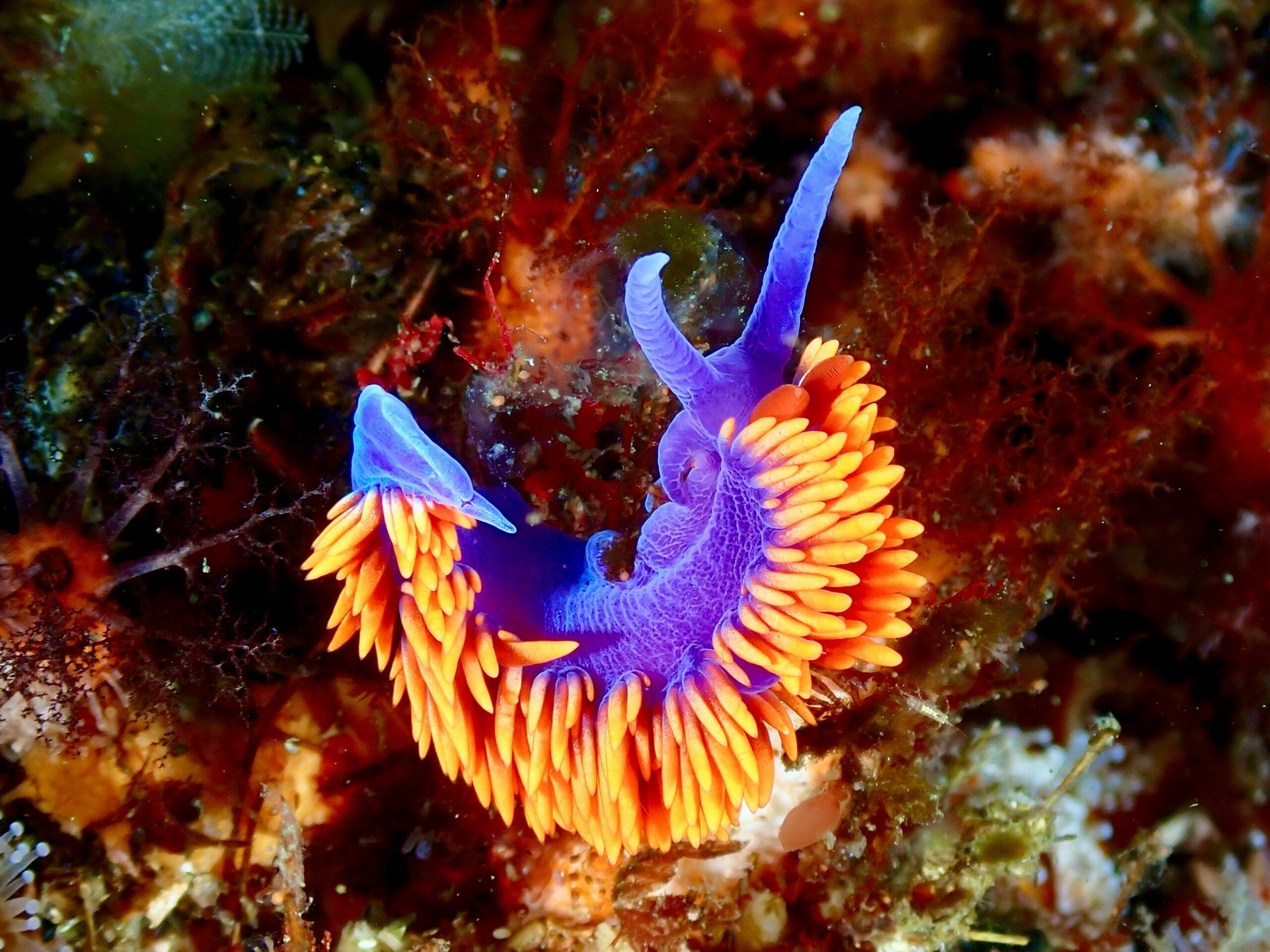Duxbury Reef California: Discover Stunning Wildlife and Hidden Gems is your ultimate guide to exploring one of the most breathtaking coastal treasures on the West Coast. Nestled along the rugged Northern California shoreline, Duxbury Reef offers an unparalleled opportunity to witness stunning wildlife in their natural habitat and uncover secret spots that many tourists overlook. Have you ever wondered where to find the best California tide pools bursting with colourful marine life? Or where you can stroll along pristine beaches while spotting rare birds and sea creatures? Then Duxbury Reef is calling your name!
This spectacular natural wonder in California is a must-visit for nature lovers, photographers, and adventure seekers alike. With its diverse ecosystem, from vibrant intertidal zones to rocky outcrops teeming with starfish, anemones, and crabs, Duxbury Reef is a hotspot for discovering hidden gems along the California coast. But it’s not just about the wildlife; the panoramic views of the Pacific Ocean will leave you breathless, and the peaceful atmosphere invites you to disconnect from the hustle and bustle of everyday life. Could this be your next unforgettable coastal adventure?
Whether you’re planning a family day out, a romantic escape, or a solo nature trek, exploring Duxbury Reef’s unique wildlife and scenic beauty is an experience you won’t forget. So why not dive into this guide and learn about the best times to visit, the top species to spot, and insider tips for making the most of your trip? Get ready to uncover the magic of Duxbury Reef California, where stunning wildlife meets hidden coastal treasures waiting just for you!
Top 7 Must-See Wildlife Species at Duxbury Reef California for Nature Enthusiasts
Duxbury Reef California offers an incredible experience for nature lovers and wildlife enthusiasts alike. Nestled along the Marin County coastline, this unique marine preserve is home to a diverse range of species that you won’t easily find elsewhere. If you ever find yourself wandering the rugged shorelines or tidal pools here, be sure to keep your eyes peeled for some of the most fascinating creatures that call this place home. From vibrant sea stars to elusive birds, the variety of wildlife at Duxbury Reef is nothing short of astonishing.
Why Duxbury Reef California is a Hidden Gem for Wildlife Watching
Duxbury Reef is not just any coastal area; it is one of the largest shale reefs on the West Coast, stretching about a mile long. Because of its geological formation and location, it creates an ideal habitat for numerous marine species. The reef’s tidal pools are alive with colour and movement during low tides, revealing a microcosm of marine life that fascinates visitors and scientists. Unlike many other coastal spots, Duxbury Reef is protected under the California Marine Life Protection Act, which means its ecosystem remains relatively untouched by human interference.
Historically, this area was known to the Coast Miwok people, who relied on the ocean for sustenance. They respected the delicate balance of the marine ecosystem, a lesson modern visitors can appreciate as they explore the reef today. The combination of cultural history and natural beauty makes Duxbury Reef California a must-visit for those who love the outdoors and wildlife.
Top 7 Must-See Wildlife Species at Duxbury Reef California
Below is a list of the most remarkable creatures you are likely to encounter during your visit. Each species adds its own character to the reef’s lively ecosystem.
-
Ochre Sea Star (Pisaster ochraceus)
- Easily spotted by its bright orange or purple colour.
- Known as a keystone species; their presence helps maintain the balance of the ecosystem.
- Often found clinging to rocks in tidal pools.
-
Bat Star (Patiria miniata)
- Recognisable by its webbed arms, unlike the typical starfish shape.
- Varies in colour from orange to purple.
- Moves slowly along the rocky shore searching for food.
-
Red Abalone (Haliotis rufescens)
- A prized shellfish with a reddish-brown shell.
- Feeds on algae found on rocks.
- Once heavily harvested, now protected to allow populations to recover.
-
Harlequin Duck (Histrionicus histrionicus)
- A strikingly coloured sea duck with white markings.
- Often found riding the waves near the reef.
- Migrates along the Pacific coast, making Duxbury Reef a seasonal hotspot.
-
California Sea Anemone (Anthopleura sola)
- Bright green or pink anemones attached to rocks.
- Uses stinging tentacles to capture prey.
- Provides shelter for small fish and invertebrates.
-
Sea Lettuce (Ulva lactuca)
- A bright green seaweed resembling lettuce leaves.
- Forms dense mats that serve as food and habitat for various marine creatures.
- Indicates healthy water quality in the reef area.
-
Brown Pelican (Pelecanus occidentalis)
- Large coastal birds known for their dramatic plunge dives.
- Frequently spotted soaring above the reef or resting on nearby rocks.
- Symbolic of California’s rich marine bird life.
Practical Tips for Spotting Wildlife at Duxbury Reef
If you want to maximise your wildlife sightings, here are some handy tips:
- Visit During Low Tide: This is when tidal pools are exposed, revealing many marine animals.
- Bring Binoculars: Especially useful for spotting birds like the Harlequin Duck and Brown Pelican.
- Wear Waterproof Shoes: The rocks can be slippery and sometimes covered with sharp barnacles.
- Go Early in the Morning: Wildlife tends to be more active before the crowds arrive.
- Respect the Environment: Avoid touching or disturbing animals, as this can harm the ecosystem.
Comparing Duxbury Reef to Other California Coastal Areas
| Feature | Duxbury Reef | Point Reyes National Seashore | Monterey Bay |
|---|---|---|---|
| Reef Length | About 1 mile | Various smaller reefs | Extensive kelp forests |
| Protection Status | Marine Protected Area | National Seashore | Marine Sanctuary |
| Common Wildlife | Sea stars, abalone, anemones | Elephant seals, tule elk | Sea otters, sea lions |
| Visitor Experience | Tidal pool exploration | Hiking, wildlife viewing | Kayaking, diving |
| Accessibility | Easy access |
How to Explore Hidden Gems and Secret Trails Around Duxbury Reef California
Exploring Duxbury Reef in California offers a unique adventure for anyone who loves nature and the sea. This place is not your typical tourist spot; it hides many secret trails and wildlife wonders that many people don’t even know exist. If you ever find yourself near Marin County, you should definitely consider stopping by Duxbury Reef. It’s not just a reef, it’s a whole ecosystem bursting with life and stories. Let’s dive into how you can uncover some of those hidden gems and enjoy the stunning wildlife that Duxbury Reef California has to offer.
What Makes Duxbury Reef So Special?
Duxbury Reef is located near Bolinas, California, along the Pacific Coast. It’s one of the largest shale reefs in the continental United States and is part of the Duxbury Reef State Marine Conservation Area. The reef extends out into Bolinas Bay and offers a mix of rocky tide pools and sandy beaches, which create perfect habitats for lots of different species.
The reef is well-known for its rich biodiversity. The intertidal zone teems with sea stars, anemones, crabs, and other marine creatures. Bird watchers also find it a paradise because many migratory and resident birds come here to feed and nest. The area has also been protected since the 1970s, which helps preserve this natural treasure from too much human interference.
How To Find The Secret Trails Around Duxbury Reef
While the main beach is easy to find, many people miss out on the hidden trails that meander through the coastal scrub and provide dramatic views of the Pacific Ocean and the reef below. These trails are not always marked well, so it helps to have some tips before you head out.
Here’s a simple outline to find these secret paths:
- Start at the Duxbury Reef State Marine Reserve parking lot – This is where most visitors begin.
- Walk north along the coastline – You’ll see some smaller dirt paths leading off the main trail.
- Look for unmarked wooden steps or narrow cleared areas – These often lead down to hidden tide pools or viewpoints.
- Bring a map or a GPS app – Since the trails are unmaintained, it’s easy to lose direction.
- Visit during low tide – The tide pools and marine life are more visible and accessible.
One of the lesser-known trails winds through coastal chaparral and offers a quiet experience away from the busier beach areas. It’s perfect for bird watchers or anyone wanting to just soak in the tranquillity.
Wildlife You Can Spot at Duxbury Reef
The reef is a hotspot for spotting diverse wildlife. If you are patient and bring binoculars, you might spot some of the following creatures:
- Sea Stars – Different species including the ochre star.
- Sea Anemones – Often bright orange or red.
- Crabs – Various kinds scuttling between rocks.
- Fish – Tide pools hold sculpins and small blennies.
- Harlequin Ducks – Rarely seen elsewhere.
- Oystercatchers – Black and white shorebirds with bright orange beaks.
- Seals and Sea Lions – Sometimes visible sunbathing on rocks.
It is important to remember that these animals should not be disturbed. Touching or removing creatures from their habitat can harm them and is often illegal in protected areas.
Historical Context of Duxbury Reef
The name “Duxbury Reef” comes from a 19th-century ship named Duxbury, which reportedly wrecked near the reef. The area has been used by Native American peoples for thousands of years, who relied on the abundant marine life for food and materials. In modern times, the reef has become a focus of conservation efforts to protect the fragile coastal ecosystems.
In the 1970s, local environmentalists pushed for the reef to be designated as a Marine Conservation Area. This status limits fishing and collecting, helping to preserve the natural landscape for future generations.
Comparing Duxbury Reef to Other California Coastal Spots
When you compare Duxbury Reef with other well-known coastal areas in California like Point Reyes or Big Sur, you may notice some important differences:
| Feature | Duxbury Reef | Point Reyes | Big Sur |
|---|---|---|---|
| Size of protected area | About 300 acres | Over 71,000 acres | Over 146,000 acres |
| Accessibility | Easy to moderate | Moderate to difficult | Difficult |
| Wildlife diversity | High in marine invertebrates | High in birds and mammals | High in terrestrial mammals |
| Visitor facilities | Limited | Several visitor centres | Few, mostly natural |
| Popular activities | Tide pooling, bird watching | Hiking, whale watching | Hiking, |
Why Duxbury Reef California is a Premier Spot for Tide Pool Adventures and Marine Life
Duxbury Reef California is often talked about as one of the best places to explore tide pools and marine life on the West Coast, but many people might not knows why it stands out so much. Located near Bolinas in Marin County, this reef offers a unique blend of natural beauty, biological diversity, and easy access that makes it a must-visit for both casual beachgoers and serious nature enthusiasts. If you’ve never been, or you only heard bits about it, this article will walk you through what makes Duxbury Reef so special and why it deserves a spot on your bucket list.
What Makes Duxbury Reef So Special for Tide Pool Adventures?
Tide pools are little pockets of life that get trapped in rocky crevices when the tide goes out. At Duxbury Reef, these pools are exceptionally rich with creatures because of the reef’s unique geological formation and its position along the Pacific Ocean.
- The reef forms a broad, flat platform of sandstone which create many shallow pools.
- These pools are home to a great variety of sea stars, anemones, crabs, and limpets.
- Unlike other places where tide pools might be sparse or hard to reach, Duxbury Reef’s pools are easily accessible during low tide, especially in the morning hours.
- The reef is part of the Greater Farallones National Marine Sanctuary, which means it is protected from fishing and other disruptive activities, allowing marine life to thrive.
One thing to remember is that the tide schedule is important. If you shows up at high tide, much of the reef will be underwater and you miss the spectacle. So, checking the tide charts before heading out is a must.
Discover Stunning Wildlife and Hidden Gems
The biodiversity at Duxbury Reef is impressive. It’s like a natural aquarium open to the public, but you have to be careful and respectful of the environment. Here are some of the creatures you might encounter:
- Ochre Sea Stars: These bright orange sea stars are a common sight and can grow quite big.
- Sea Anemones: With their colourful tentacles, they might look like flowers but they are actually predatory animals.
- Nudibranchs: These small, colourful sea slugs are a favourite among marine biologists and photographers.
- Tidepool Sculpins: Small fish that hide among the rocks.
- Barnacles and Mussels: Always cling tightly to the rocks, creating dense colonies.
- Crabs and Hermit Crabs: Scuttling about, sometimes hiding in the pools.
Besides animals, you may find interesting algae and seaweeds that contributes to the ecosystem. Some types of seaweed here are edible and have been used by Indigenous peoples for centuries.
A Bit of History and Conservation Efforts
Duxbury Reef has been recognized for its ecological importance for many decades now. The area was named after the schooner Duxbury, which wrecked nearby in the 19th century, an event that reminds us of the treacherous nature of the Pacific coast.
In recent years, local community groups and conservationists have worked hard to protect the reef from pollution and human damage. Educational programs encourage visitors to observe without disturbing marine life, which is crucial because it helps the reef stay vibrant for future generations.
Practical Tips for Visiting Duxbury Reef
Planning a trip to Duxbury Reef can be simple but keep in mind:
- Best Time to Visit: Low tide during the morning is ideal. Spring and early summer often have clearer water.
- What to Bring: Comfortable shoes for walking on slippery rocks, sun protection, a camera, and a guidebook or app about tide pools.
- Rules to Follow: Don’t pick up animals or remove anything from the pools. Step carefully to avoid crushing fragile creatures.
- Parking: There is limited parking near the reef, so arriving early is recommended.
- Safety: Watch out for waves, as they can be unpredictable. Also slippery rocks mean take your time walking.
How Does Duxbury Reef Compare to Other Tide Pool Spots in California?
California has many tide pool locations, but Duxbury Reef offers a few advantages over others:
| Feature | Duxbury Reef | Point Lobos (Carmel) | Fitzgerald Marine Reserve (Moss Beach) |
|---|---|---|---|
| Accessibility | Easy access from parking | Steep trails to pools | Moderate walk from parking |
| Marine Life Diversity | Very high | High | Moderate |
| Protection Status | National Marine Sanctuary | State Park | State Reserve |
| Visitor Crowds | Moderate to low | High | Moderate |
| Tide Pool Size | Large, expansive pools | Smaller pools | Medium-sized pools |
Many find Duxbury Reef less crowded than Point Lob
Discover the Best Times to Visit Duxbury Reef California for Stunning Wildlife Encounters
Duxbury Reef California is a hidden treasure along the Northern California coastline that many wildlife enthusiasts and nature lovers dream to explore. If you ever wonder when the best time to visit Duxbury Reef California is, especially to witness stunning wildlife encounters, you’re in the right place. This unique spot offers more than just scenic views; it’s a living classroom of marine biology, coastal ecology, and even local history. Yet, not all times of the year are equal if you want to see its full natural splendour.
Why Duxbury Reef California is So Special
Located near Bolinas, Marin County, Duxbury Reef is one of the largest rocky intertidal reefs in the continental United States. It stretches over a mile offshore, creating an extensive habitat for sea creatures and birds. The reef is part of the Duxbury Reef State Marine Conservation Area, which helps protect its sensitive ecosystem. This place has fascinated visitors since the early 20th century, when naturalists first documented its rich biodiversity — from colourful sea stars to elusive sea otters.
The reef’s rocky pools and tidal zones are teeming with life. You might spot anemones, crabs, limpets, and even the rare black abalone. It’s a haven for bird watchers too; pelicans, cormorants, and oystercatchers frequent the area. Besides animals, the reef’s geology tells stories of ancient tectonic movements that shaped California’s coastline.
Best Times to Visit Duxbury Reef California for Wildlife Viewing
Choosing when to visit depends on what wildlife you want to see and how comfortable you are with the weather. The coastal climate here is mild but can be foggy and chilly, especially in summer mornings.
Spring (March to May)
- Spring tide cycles expose more of the reef, ideal for tide pooling.
- Migratory birds start returning, so birdwatchers get a treat.
- Sea otters are more active around this time as they feed heavily before summer.
Summer (June to August)
- Surprisingly, summer can be foggy and cooler due to marine layer.
- Still good for tide pooling but with slightly less wildlife activity than spring.
- Kayaking around the reef is popular, providing a different perspective on marine life.
Fall (September to November)
- Often the warmest and clearest weather of the year.
- Seals and sea lions haul out on nearby rocks in larger numbers.
- The ocean is calmer, making it easier to spot fish and other marine creatures.
Winter (December to February)
- The rougher ocean and high tides make tide pooling difficult and sometimes unsafe.
- Whale migrations pass nearby, so offshore watching might be rewarding.
- Less crowded, perfect for solitude seekers.
What Wildlife You Can Expect to See
The diversity at Duxbury Reef is one of its main draws. Here’s a quick list of some of the wildlife you might encounter:
- Sea Stars (including the colourful ochre sea star)
- Black Abalone (a protected species)
- Sea Anemones (various species)
- Crabs (hermit crabs, red rock crabs)
- Sea Otters
- Harbour Seals and California Sea Lions
- Shorebirds such as Pelicans, Cormorants, and Oystercatchers
- Occasional visits from migrating whales offshore
Hidden Gems Around Duxbury Reef
Besides the reef itself, there are some lesser-known spots nearby that worth exploring if you’re in the area.
- Bolinas Lagoon: A tranquil estuary with birdwatching opportunities and kayaking.
- Point Reyes National Seashore: About 15 miles north, it offers dramatic cliffs and more wildlife.
- Muir Woods National Monument: Famous for its ancient redwoods, just a short drive away.
Practical Tips for Visiting Duxbury Reef California
If you plan a trip, here are some practical advice to keep in mind:
- Check Tide Charts: Low tides are best for exploring tidal pools safely. Aim for at least an hour before low tide.
- Wear Proper Footwear: Rocky, slippery surfaces are common, so sturdy shoes are a must.
- Bring Binoculars: For spotting distant birds and marine mammals.
- Respect Wildlife: Don’t touch or remove animals from the tide pools; many are fragile or protected.
- Be Prepared for Weather: Layered clothing is wise as coastal weather can shift quickly.
A Simple Comparison: Duxbury Reef vs Other California Tide Pools
| Feature | Duxbury Reef | Monterey Bay Tide Pools | La Jolla Tide Pools |
|---|---|---|---|
| Location | Marin County, Northern CA | Central Coast, near Monterey | San Diego, Southern CA |
Insider Tips for Photographing Rare Wildlife and Scenic Views at Duxbury Reef California
Duxbury Reef California is one of those rare spots where nature seems to have conspired to create a perfect blend of rugged coastline, abundant wildlife, and stunning vistas. For photographers, especially those looking to capture the elusive moments of rare wildlife or the dramatic scenic views, this place offers an almost magical canvas. But it’s not just about showing up with a camera—there’s a bit of insider know-how that can really make your photographs stand out.
Why Duxbury Reef California is a Must-Visit for Nature Photographers
Situated near Bolinas in Marin County, Duxbury Reef is part of a marine reserve, protecting one of the largest exposed rocky intertidal reefs in California. This means you get a glimpse into a thriving ecosystem that is often shielded from the more crowded tourist paths. The reef itself is a tidal wonderland, where sea stars, anemones, crabs, and sometimes even harbour seals can be spotted. It’s also a great spot for birdwatching, with a variety of shorebirds and raptors frequently seen.
Historically, the reef has been studied extensively by marine biologists because of its unique biodiversity. The protection status helps preserve the environment, so visitors should be mindful of their impact when photographing or exploring the area. The landscape is ever-changing too; the tide’s rhythm exposes different creatures and features throughout the day.
Insider Tips for Photographing Rare Wildlife at Duxbury Reef
Capturing wildlife at Duxbury Reef is not as simple as pointing and shooting. The animals here are shy or camouflaged, and the conditions can be tricky. Here are some practical tips that might help you snag that perfect shot:
- Timing is everything: Visit during low tide to access the reef’s pools and see creatures like sea stars and crabs up close. Early morning or late afternoon light also provides softer illumination and better shadows.
- Use a zoom lens: Many animals stay hidden or at a distance, so a zoom lens (200mm or more) lets you photograph them without disturbing their habitat.
- Be patient and observant: Wildlife doesn’t pose for pictures. Spend time quietly watching, and you’ll notice movement or subtle behaviours.
- Avoid flash photography: It can startle animals and damage the delicate ecosystem.
- Bring waterproof boots: The rocky surfaces can be slippery and wet, sometimes requiring you to get closer to the water’s edge.
- Respect the environment: Stay on trails and avoid stepping on tide pools or disturbing the wildlife.
Scenic Views: The Hidden Gems Beyond the Reef
While the reef itself is a highlight, the surrounding scenery deserves equal attention. The views from Duxbury Reef extend across Bolinas Bay and the Pacific Ocean, often framed by dramatic cliffs and windswept vegetation. On clear days, you might even glimpse the Farallon Islands in the distance.
Unlike more commercialised locations, Duxbury Reef’s vistas feel untouched and raw. The interplay of sunlight on waves, the crashing surf, and the distant horizon create a dynamic backdrop for landscape photography.
Here’s what to look out for when you’re framing scenic shots:
- Golden hour lighting: The hour after sunrise and before sunset adds warm hues and long shadows that enhance textures.
- Cloud formations: The coastal weather can produce dramatic skies with rolling fog or towering clouds.
- Foreground interest: Use driftwood, rocks, or tide pools in the foreground to add depth and scale.
- Wide-angle lenses: Perfect for capturing vast seascapes and sweeping horizons.
- Changing tides: Different tide levels reveal alternative compositions, such as exposed reef patterns or water reflections.
Comparing Duxbury Reef with Other California Coastal Spots
If you’ve been to popular places like Point Reyes or Big Sur, you might wonder how Duxbury Reef stacks up. While it lacks the towering cliffs of Big Sur or the famous elephant seals of Año Nuevo, Duxbury offers a more intimate experience with tidepool ecosystems and less crowded trails. It’s ideal for photographers who want to explore micro-habitats rather than grand landscapes alone.
| Feature | Duxbury Reef | Point Reyes | Big Sur |
|---|---|---|---|
| Wildlife Diversity | High intertidal species | Diverse marine & terrestrial | Dramatic marine mammals |
| Visitor Crowds | Low to moderate | Moderate to high | High |
| Accessibility | Easy via short trails | Moderate trails & beaches | Varied, some challenging |
| Scenic Variety | Rocky reefs & bays | Cliffs, forests, beaches | Cliffs, forests, waterfalls |
| Best Time for Photography | Low tide, golden hour | Golden hour, foggy mornings | Golden hour, sunset |
Practical Equipment and Settings Suggestions
For those planning to photograph at Duxbury Reef, here’s a quick checklist of what
Conclusion
Duxbury Reef in California stands out as a remarkable coastal destination, offering visitors a unique blend of natural beauty, rich marine biodiversity, and excellent recreational opportunities. From its stunning tide pools teeming with vibrant sea life to the dramatic rocky shoreline that attracts photographers and nature enthusiasts alike, Duxbury Reef provides an unforgettable experience for all who explore it. Its accessibility and well-preserved environment make it not only a perfect spot for casual beachgoers but also for serious ecologists and wildlife watchers. Whether you are interested in hiking along scenic trails, observing diverse intertidal creatures, or simply enjoying the serene ocean views, Duxbury Reef has something to offer. To fully appreciate this coastal gem, consider planning a visit during low tide when the tide pools are most visible. Embrace the chance to connect with nature and support local conservation efforts to help preserve Duxbury Reef’s pristine ecosystem for future generations.






